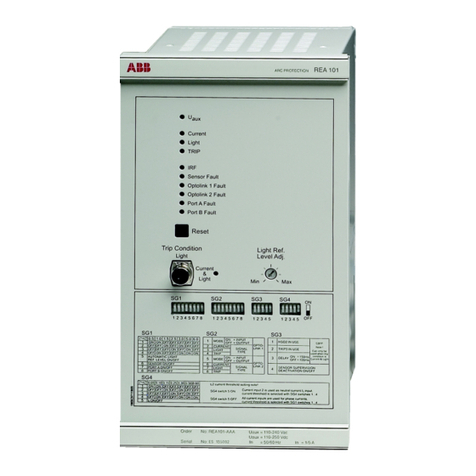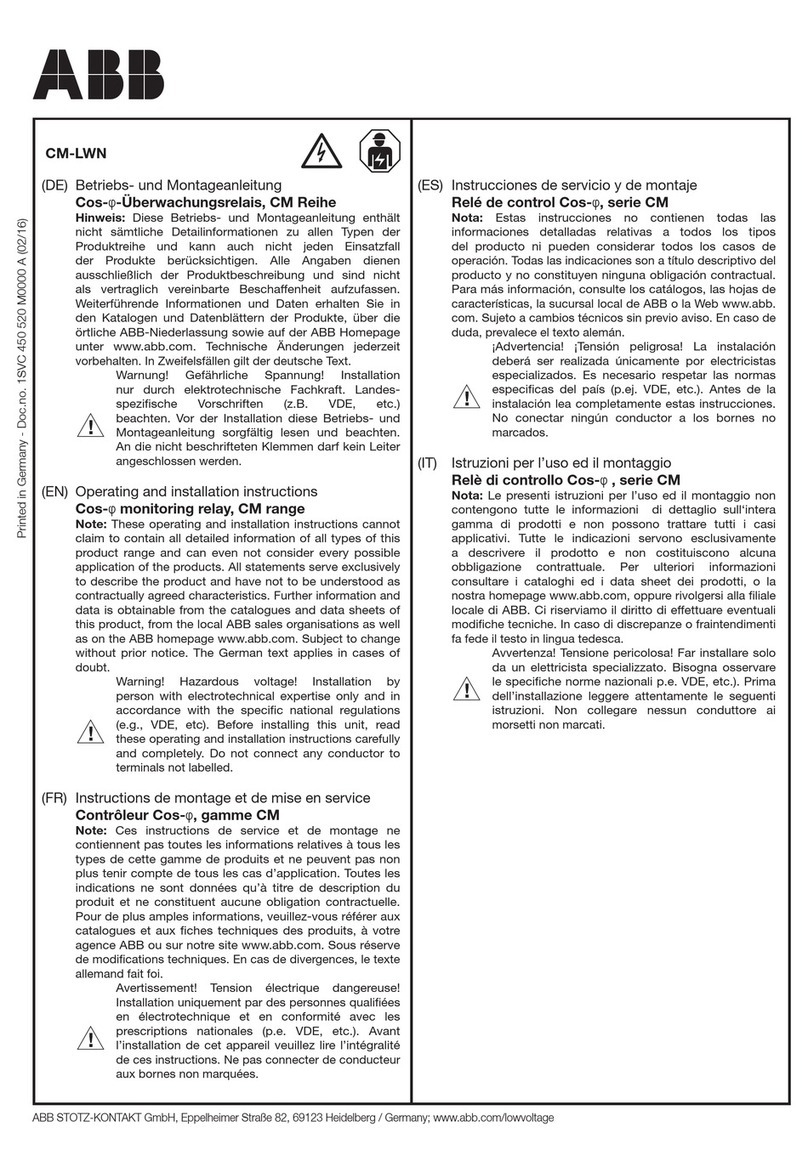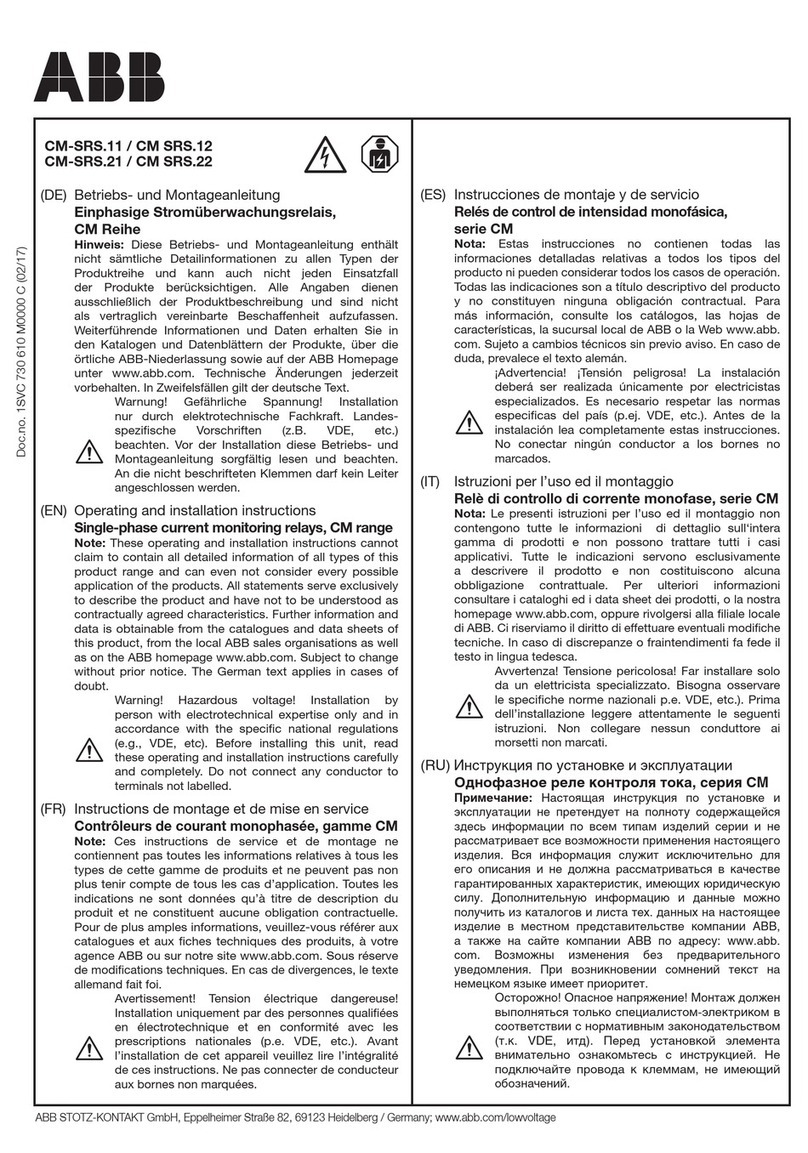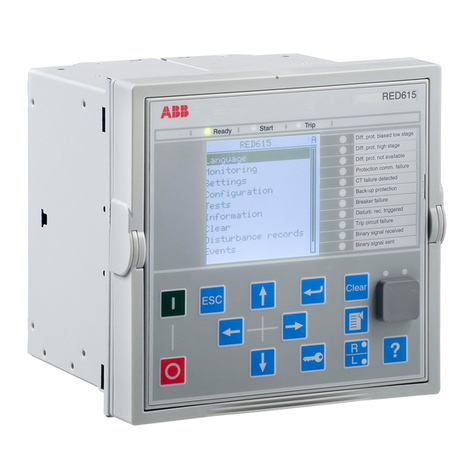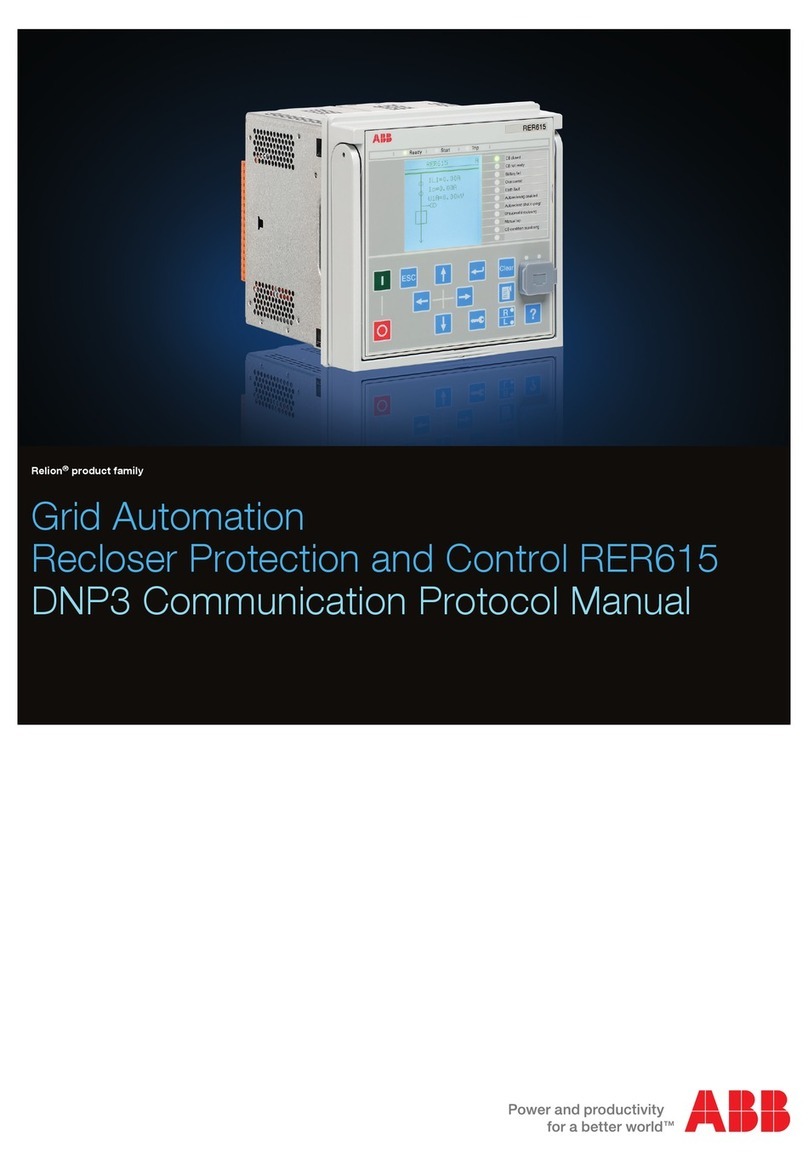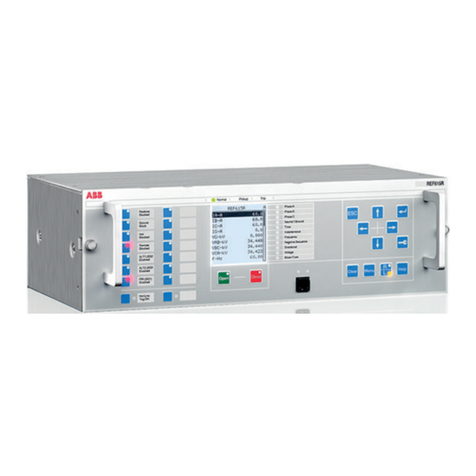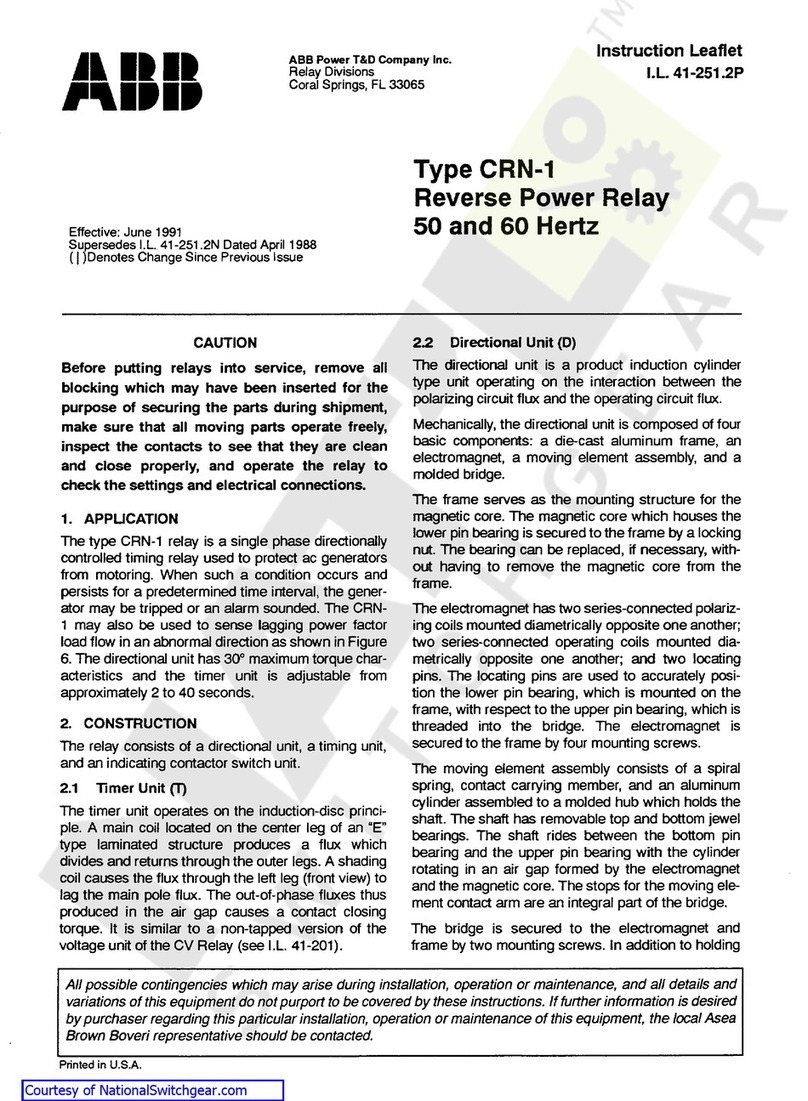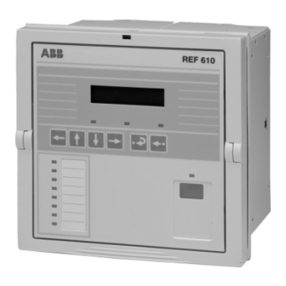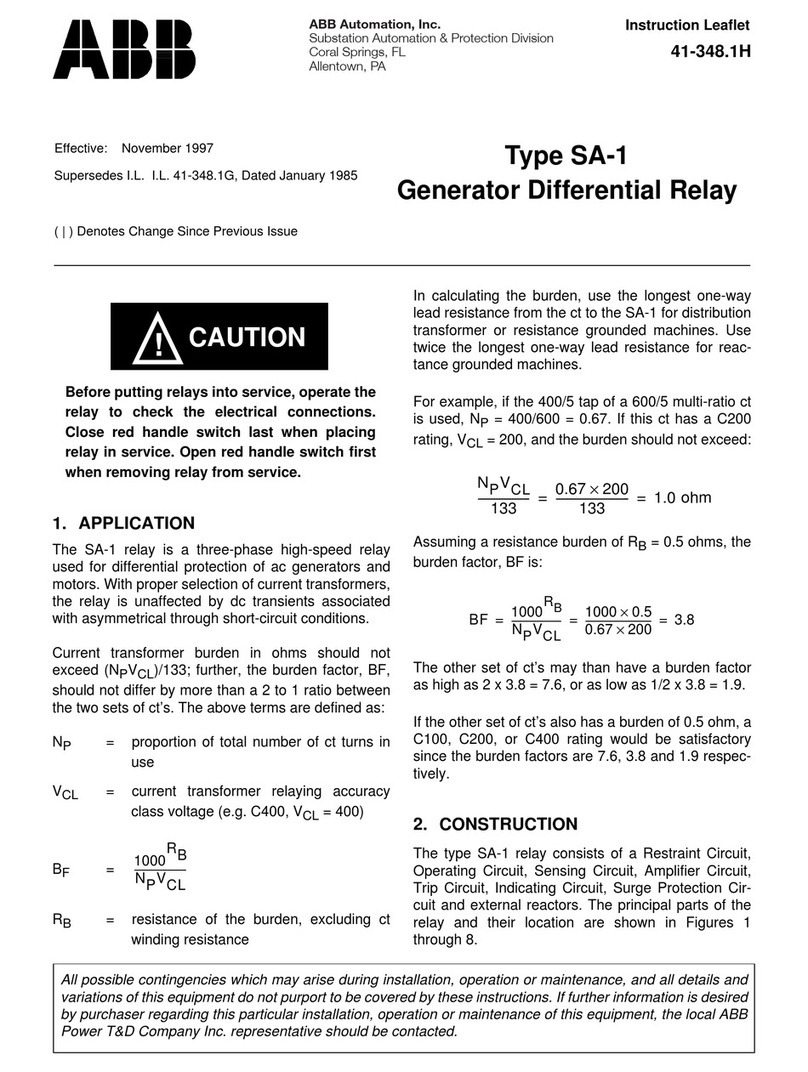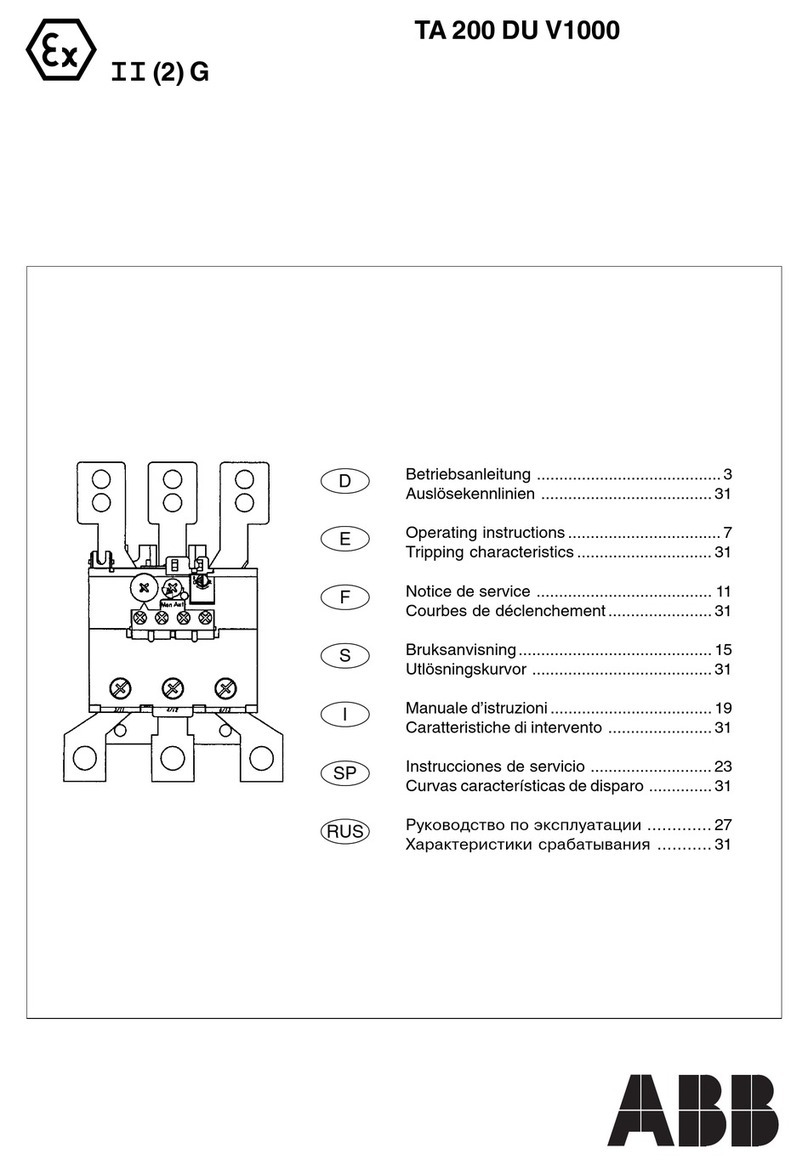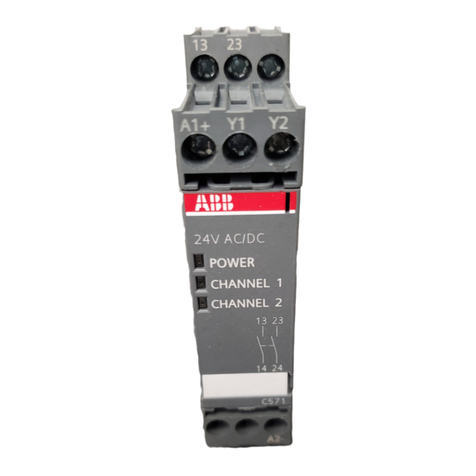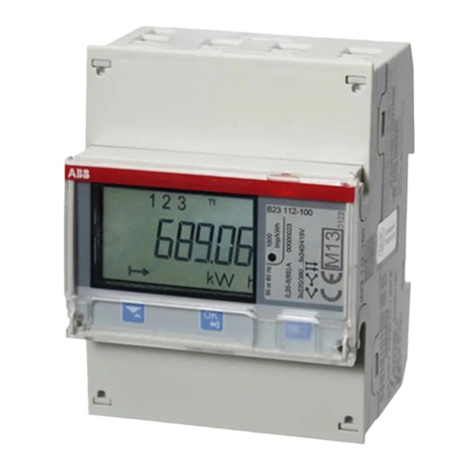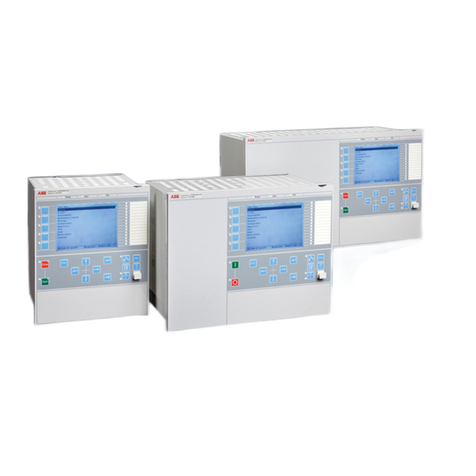
41-101.3A Type CKO Overcurrent Relay
2
switch, which allows the operation indicator target to
drop.
The front spring, in addition to holding the target, pro-
vides restraint for the armature and thus controls the
pickup value of the switch.
2.3 Instantaneous Overcurrent Unit
2.3.1 Construction
The instantaneous overcurrent unit consists of an in-
duction cylinder unit, capacitor, varistor, and a trans-
former. The components are connected such that a
contact closing torque is produced when the current
exceeds a specified value.
2.3.2 Induction Cylinder Unit
Mechanically, the cylinder unit is composed of four
basic components: a diecast aluminum frame, an
electromagnet, a moving element assembly, and a
molded bridge.
The frame serves as the mounting structure for the
magnetic core. The magnetic core which houses the
lower pin bearing is secured to the frame by a locking
nut. The bearing can be replaced, if necessary, with-
out having to remove the magnetic core from the
frame.
The electromagnet has two pairs of coils. The coils
of each pair are mounted diametrically opposite one
another, and a capacitor is connected in series with
one pair of coils. In addition, there are two locating
pins. The locating pins are used to accurately posi-
tion the lower pin bearing, which is threaded into the
bridge. The electromagnet is secured to the frame by
four mounting screws.
The moving element assembly consists of a spiral
spring, contact carrying member, and an aluminum
cylinder assembled to a molded hub which holds the
shaft. The shaft has removable top and bottom jewel
bearings. The shaft rides between the bottom pin
bearing and the upper pin bearing with the cylinder
rotating in an air gap formed by the electromagnet
and the magnetic core.
The bridge is secured to the electromagnet and
frame by two mounting screws. In addition to holding
the upper pin bearings, the bridge is used for mount-
ing the adjustable stationary contact housing. The
stationary contact housing is held in position by a
spring type clamp. The spring adjuster is located on
the underside of the bridge and is attached to the
moving contact arm by a spiral spring. The spring ad-
juster is also held in place by a spring type clamp.
With the contact closed, the electrical connection is
made through the stationary contact housing clamp,
to the moving contact, through the spiral spring out
to the spring adjuster clamp.
2.3.3 Saturating Transformer
The transformer is a saturating type consisting of a
tapped primary winding and a secondary winding. A
varistor is connected across the secondary winding
to reduce the voltage peaks applied to the induc-
tion cylinder unit and phase shifting capacitor.
2.4 Operation
Operation of the instantaneous overcurrent unit oc-
curs when the primary current of the transformer ex-
ceeds a value as marked on the tap plate. Upon ap-
plication of current to the transformer, a voltage is
induced in the secondary winding. This voltage is im-
pressed upon the parallel connected pairs of cylinder
unit coils. The capacitor connected in series with one
pair of coils shifts the current flowing in these coils in
reference to the current flowing in the other pair of
coils. As a result, the air gap fluxes of the cylinder
unit are out of phase and a contact closing torque is
produced.
The primary of the transformer is tapped and brought
out to a tap connector block for ease in changing the
pickup current of the relay. The use of a tapped
transformer provides approximately the same ener-
gy level at a given multiple of pickup current for any
tap setting, resulting in one time curve throughout
the range of the relay.
Two terminals, 6 and 7, across one pair of pole wind-
up are brought out so that operating current can be
short circuited around the pole windings preventing
the unit from developing torque.
3.0 CHARACTERISTICS
The time characteristics of the overcurrent relays are
designated by specific numbers as indicated below
(e.g., CKO-8).


